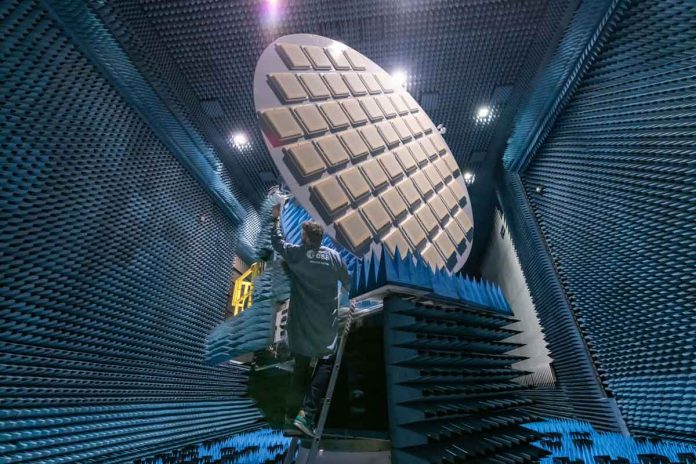The 5-m diameter transponder antenna is the largest antenna ever tested in ESA’s Hertz radio frequency test chamber. It will operate down on the ground to help calibrate the Biomass mission and it will chart all the forests on Earth.
This is a particularly challenging test campaign both in terms of the size of the antenna and the very low P-band frequency that Biomass will be using. It will allow it to pierce through forest canopies to acquire individual trees.
Scientists said, when they test a large satellite, its antenna is significantly smaller. They are between 0.5 and 2 meters across. But this entire structure is a radiating antenna in its own right. Its sides coming near to the chamber walls.
This means the testing process highlight some aspects of the chamber we’ve never seen before. Scientists are coming up with a measurement method which involves multiple acquisitions from different spots within the chamber. It combines carefully to subtract such environmental effects.
Part of ESA’s technical heart in the Netherlands. The metal-walled “Hybrid European Radio Frequency and Antenna Test Zone” chamber is shut off from all external influences. Its internal walls are studded with radio-absorbing “anechoic” foam pyramids. It allows radio-frequency testing without any distorting reflections.
Its name starts with Hybrid because the chamber can assess radio signals from antennas both in localized “near-field” terms or else on a “far-field” basis. The signal has crossed thousands of kilometers of space. Biomass will deploy a massive 12-m diameter reflector to harness P-band radar signals in order to perform a five-year census of all Earth’s trees.

